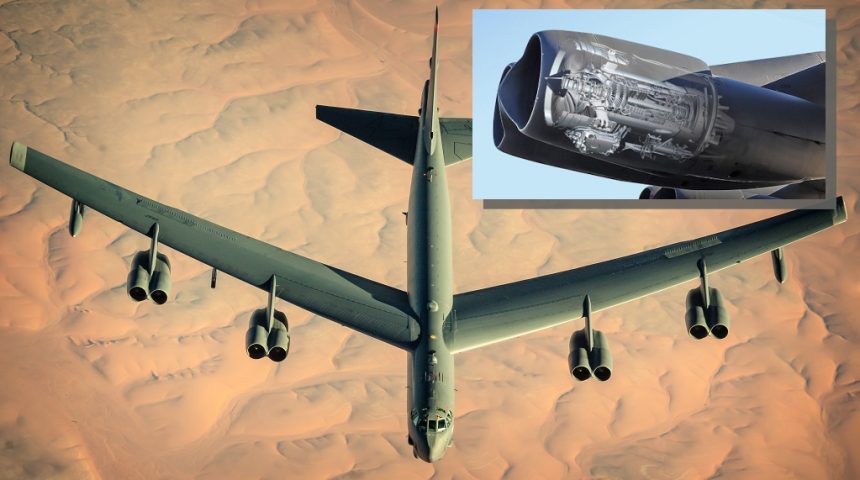B-52’s New Engines, B-1’s Early Retirement Updates, B-2 off runway, B-21 progress And All The Recent News Regarding The U.S. Bomber Fleet.
The Pentagon announced through their contract notices on Sept. 24, 2021, that Rolls Royce has been awarded an estimated $500,870,458 indefinite-delivery/indefinite-quantity contract to provide new engines for the B-52H Stratofortress bomber fleet, with a potential total of $2,604,329,361 if all options are exercised. According to the notice, the contract will provide 608 commercial engines plus spare engines, associated support equipment and commercial engineering data and is expected to be completed by September 2038.
The B-52 Commercial Engine Replacement Program has been in the works since 2018, with GE Aviation, Pratt & Whitney and Rolls-Royce as competitors for the contract. As we anticipated in other occasions, GE proposed the CF34-10 and the Passport engines (used by the Embraer E190/E195 airliner and the Bombardier Global 7000/8000 business jet respectively), RR is offered the F130 (military version of the BR725 used by the Gulfstream G650 business jet and already powering both the C-37 and E-11 BACN) and PW offered the PW800 (initially designed for regional and business jets).
The selected Rolls-Royce F130 engine will replace the TF33-PW-103, which has powered the B-52 since the 1960s and is projected to no longer be supportable beyond 2030. The B-52 original equipment manufacturer, Boeing, is responsible for integrating the engines onto the aircraft. The Air Force plans to finalize integration activities and deliver the first lot of B-52H modified aircraft by the end of 2028, following the delivery of the first two fully modified B-52s are projected by the end of 2025.
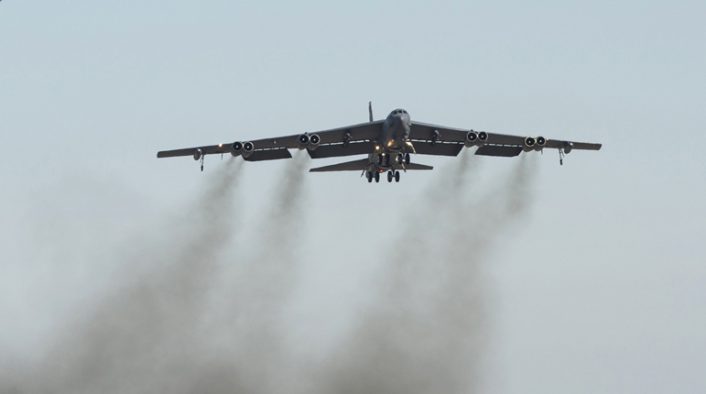
The contract notice mentioned 608 engines and an unspecified number of spare engines, with Rolls Royce further specifying that the contract will cover 650 engines. This means that the Air Force will get 608 engines, eight for each of the 76 B-52s in service today, and 42 spare engines. The new engines are expected to remain on the B-52H through at least 2050, increase fuel efficiency, increase range, reduce emissions in unburned hydrocarbons, and significantly reduce maintenance costs.
“The B-52 CERP is a complex upgrade that not only updates the aircraft with new engines, but updates the flight deck area, struts and nacelles,” said Brig. Gen. John Newberry, Air Force bombers program executive officer. “Our current virtual digital prototyping efforts are giving us an opportunity to integrate the engines and other changes to the B-52 before doing any physical modifications. This has allowed us to develop the most cost-efficient solution while reducing the time from concept to production.”
According to reports, a Boeing official stated that “the B-52’s disused nose-mounted infrared pods will likely be removed to improve airflow at the front of the bomber”. The two pods are the AN/AAQ-6 Forward Looking InfraRed (FLIR) and the AN/AVQ-22 Low Light TeleVision (LLTV), part of the AN/ASQ-151 Electro-Optical Viewing System (EVS) installed on the Stratofortress in the 1970s. The functions of the EVS became redundant with the introduction of the AN/AAQ-33 Sniper Advanced Targeting Pod under the B-52’s wing about ten years ago.
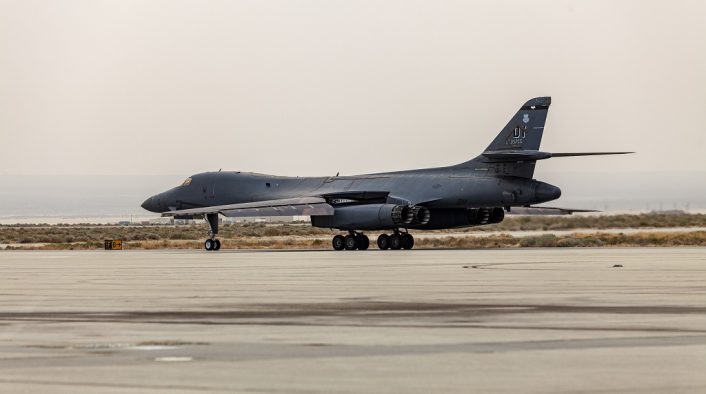
Another news that made the rounds in the same days as the B-52 CERP contract award is the departure of the last of the 17 most worn B-1B Lancer (or “Bone” as the B-1 is normally dubbed in the pilot community) bombers for the early retirement. On September 23, the final plane, identified by the press release as the B-1B 85-0074, flew out of Edwards Air Force Base (California) to the “boneyard” at Davis-Monthan Air Force Base (Arizona).
This early retirement started earlier this year with the goal of focusing maintenance and depot-level manpower on the remaining aircraft, increasing readiness and paving the way for the bomber fleet modernization and the introduction of the B-21 Raider. “The divesture plan was executed very smoothly,” Brig. Gen. Kenyon Bell, AFGSC Director of Logistics and Engineering, said. “With fewer aircraft in the B-1 fleet, maintainers will be able to give more time and attention to each aircraft remaining in the fleet.”
The 17 B-1B aircraft were retired from a fleet of 62, leaving 45 in the active inventory. Out of the 17 retired, one aircraft went to Tinker Air Force Base, Oklahoma, as a prototype for structural repair actions. One went to Edwards AFB as a ground tester. One went to Wichita, Kansas, at the National Institute for Aviation Research for digital mapping, and one went to Barksdale Air Force Base, Louisiana, as a static display for the Barksdale Global Power museum.
The remaining 13 aircraft will be stored at the boneyard at the 309th Aerospace Maintenance and Regeneration Group at Davis-Monthan AFB in Type 4000 storage. Four of those will remain in a reclaimable condition that is consistent with Type 2000 recallable storage. As we explained other times in the past, the Type 2000 storage keeps the aircraft available for parts reclamation or “cannibalization” to keep other aircraft flying, while the Type 4000 is for aircraft in excess of DoD needs, usually the oldest stored and those least likely to ever be recalled to service, which are scrapped once all useful parts have been harvested from them.
“Beginning to retire legacy bombers, to make way for the B-21 Raider, is something we have been working toward for some time,” said Gen. Tim Ray, Air Force Global Strike Command commander in a public release earlier this year. “Due to the wear and tear placed on the B-1 fleet over the past two decades, maintaining these bombers would cost 10s of millions of dollars per aircraft to get back to status quo. And that’s just to fix the problems we know about. We’re just accelerating planned retirements.”
Assessments conducted on the fleet found that the 17 B-1Bs had experienced significant structural fatigue with cracks appearing in highly stressed structural components joining the wings to the fuselage. Ten to 30 million dollars per aircraft would be required to bring the aircraft back to the status quo. One of the causes of these problems is considered to be the fact that the B-1 was long used for a mission it wasn’t really designed for, Close Air Support, which included slow flying at high altitude with its wings swept forward while waiting to be called in by troops on the ground. That type of flying is said to have caused too much stress on the wings, wing roots and sweep mechanism.
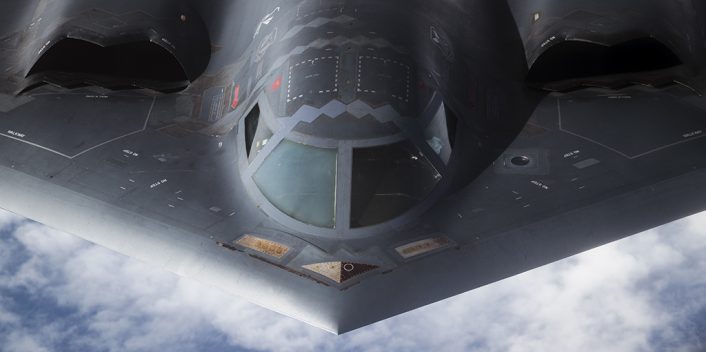
The B-2A Spirit stealth bomber had some bad news too in the last few weeks, with one damaged during an emergency landing at Whiteman Air Force Base. Following the incident, a Temporary Flight Restriction was activated with a six nautical miles radius around the air base from ground to 8,000 feet, with the reason listed in the NOTAM (NOtice To AirMen) as “to provide a safe environment for accident investigation”.
The War Zone was able to obtain a statement from the Air Force Global Strike Command:
“There has been an incident at Whiteman AFB. It occurred at approximately 12:30 a.m. on Sept. 14.
A U.S. Air Force B-2 Spirit experienced and [sic] in-flight malfunction during a routine training mission and was damaged on the runway at Whiteman Air Force Base, Missouri, after an emergency landing.
There were no personnel injuries and no fire associated with the landing. The incident is under investigation and more information will be provided as it becomes available.”
No other details were released to the public however, a day later, TWZ obtained satellite images of Whiteman AFB via Planet Labs, which were captured at around 10:30 AM local time on September 15. As the image shows, the B-2 veered off the runway and, judging the visible shadows, its left wing came to rest on the ground, as if the landing gear collapsed. Multiple vehicles and equipment are visible, as the recovery and mishap investigation were already in progress when the image was taken.
TWZ mentioned unspecified sources who stated that the stealth bomber experienced a hydraulic failure during a training flight and had its port main landing gear collapse while landing, causing a runway excursion. While this report is not confirmed, it seems to agree with what can be seen in the satellite photo. Also, the photo shows the overall shape of the aircraft still intact, but the amount of damage to the landing gear and the underside of aircraft and left wing is unknown.
This bomber, whose serial is unknown, is one of the 20 B-2 bombers in service today and this incident alone now caused a 5% reduction of the available fleet until it is repaired and ready to fly again. Even if the damage was to be judged significant, it seems unlikely that the aircraft will be written off, as another B-2, which was heavily damaged by fire, was able to fly again after a four-year repair effort in 2014. The only total loss for the B-2 Spirit remains the one crashed on departure from Guam in 2008.
Anyway, it is worth remembering that, even after 30 years of service, the Spirit is kept in top-notch conditions by its dedicated personnel. The stealth bomber is one of the key components of the US long-range strike fleet and it will continue to perform this role until the new B-21 Raider will be ready to take over.
Three B-2 bombers recently returned to Whiteman AFB after being deployed to Keflavik Air Base in Iceland for a long-planned Bomber Task Force mission where the aircraft conducted theater and flight training across Europe and Africa. The BTF mission was the first deployment to Iceland for the Spirit, after the first-ever landing in the country in 2019 for a hot pit refueling that expanded the capabilities of the stealth bomber well into the strategic Arctic region.
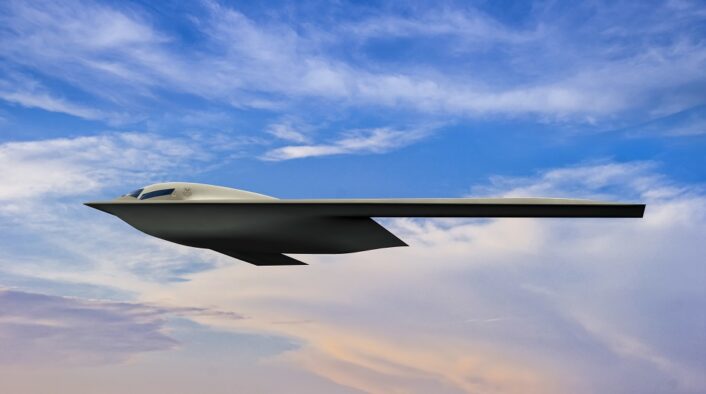
Last, but not least, the new B-21 Raider stealth bomber. The aircraft took center stage at the recent Air Force Association’s Air, Space and Cyber Conference, with the Secretary of the Air Force, Frank Kendall, providing an update on the program and confirming that not two, like publicly known until now, but five Raiders are currently on the production lines at the Air Force Plant 42.
“We have been living off of bomber fleet investments made many decades ago, but that is rapidly changing. As I speak here there are now 5 test aircraft being manufactured on the B-21 production line at Air Force Plant 42 in Palmdale,” said Kendall. “You will never hear me make optimistic predictions about programs; all programs have risk and the same is true of the B-21, but at this point at least, the program is making good progress to field real capability.”
Mr. Randall Walden, director of the Department of the Air Force Rapid Capabilities Office and Program Executive Officer of the B-21 Raider Program, had previously confirmed to Air Force Magazine in January that two test aircraft were making their way down the production line at Northrop Grumman’s facility in Palmdale. According to Doug Young, vice president and general manager of Northrop Grumman’s Strike Division, this significant progress can be credited to a strong customer partnership, early application of digital tools and a talented, dedicated workforce.
The application of new digital tools and processes early in the engineering and manufacturing development (EMD) phase has been a focus of recently released information on the program. The use of augmented and virtual reality, and ground and airborne test beds have been recently cited as enablers of program progress and risk reduction.
“The integration of our digital design capabilities with our advanced manufacturing technologies means we’re working smarter and faster to bring next-generation technologies to life,” said Chris Daughters, Aeronautics sector vice president of Engineering at Northrop Grumman. “Our ability to continually reduce risk throughout EMD by utilizing these transformative digital capabilities is going to pay dividends throughout the full lifecycle of the aircraft.”

